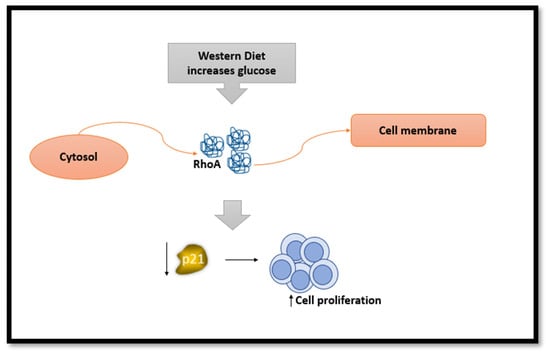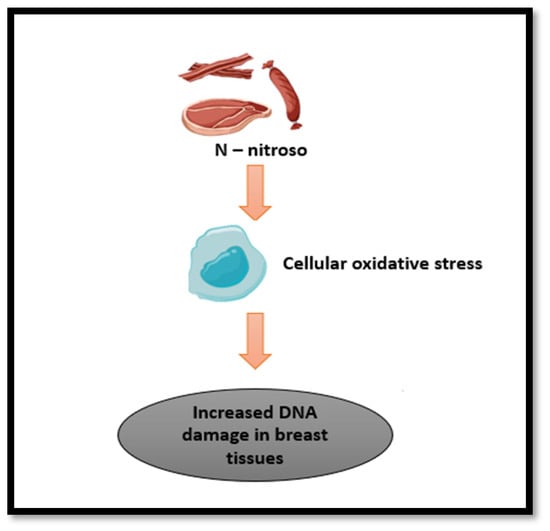You're using an outdated browser. Please upgrade to a modern browser for the best experience.
Please note this is a comparison between Version 1 by Reema Tayyem and Version 2 by Lindsay Dong.
Breast cancer (BC) is the most predominant malignancy in Arab women in the Middle East. Most dietary patterns (DPs) such as the Dietary Approaches to Stop Hypertension, Mediterranean, Plant-based and Paleolithic diets are identified to decrease the probability of BC by being rich sources of fiber, healthy fats, and vitamins and minerals. However, there are few DPs that increase the risk of BC, because of the existence of foods such as unhealthy fats, low fiber, sugars, and fried foods in those patterns which contribute to increasing the risk factors associated with BC.
- breast cancer
- dietary pattern
- middle east
1. Introduction
Breast Cancer (BC) is diagnosed in 2.3 million women, ranking 1st in terms of new cases, and 4th in terms of associated mortality, accounting for 685,000 deaths as reported by World Health Organization’s GLOBOCAN, thereby emerging as a predominant cancer globally as of 2020 [1][2][1,2]. Additionally, it is also reported in GLOBOCAN, as of 2020, even in the Middle East Region, BC is the leading type of cancer in women [3][4][5][6][7][8][9][10][11][12][13][14][15][16][17][3,4,5,6,7,8,9,10,11,12,13,14,15,16,17]. The reason for such increase in cases is attributed partly to the advancement in medical care resulting in better diagnosis and to the shift in women’s lifestyle to more westernized, characterized by dietary habits, late marriages and pregnancy, lower rate of reproduction, smoking, and the use of contraceptives and hormone replacement therapies [18].
BC is described as a disease with an unusual growth of breast cells. When these cells grow out of control, they form tumors which can be benign and are often not life-threatening. Once these cells become malignant, the cells spread to nearby breast tissues, lymph nodes, and other organs through metastasis, resulting in an increased risk of fatality [2].
The likelihood of BC occurrence is predisposed by a variety of modifiable and non-modifiable risk factors. Non-modifiable risk factors include gender (females face a heightened risk of BC development, with men accounting for only 0.5–1% of cases), age (with a higher incidence in those over 40 years), family history of BC, and genetic mutations in the BRCA1, BRCA2, and PALB-2 genes. On the other hand, the modifiable risk factors may include alcohol consumption, tobacco use, exposure to radiation, body mass index (BMI), physical inactivity, unhealthy diet, oral contraceptives, and high stress [2][19][20][2,19,20]. Dietary factors alone account for 35% of the risk factors that can promote BC [19].
Dietary pattern (DP) is defined as the composition of the diet, the foods, food groups, and nutrients it contains, as well as how frequently and how much of each is regularly consumed [21]. DP grouping and classification are determined by the degree of similarity between the stressed or limited/restricted food groups, macronutrient profiles, or both. The most common DP include DASH (Dietary Approaches to Stop Hypertension)-style, Mediterranean-style, pescetarian, ovo/lacto-vegetarian, vegan, low-fat, very low-fat, low-carbohydrate, Paleolithic (Paleo) and very low-carbohydrate/ketogenic patterns [22].
2. Dietary Patterns of Breast Cancer in the Middle East
2.1. Mediterranean Dietary Pattern
The Mediterranean diet (MD) advocates plant-centric foods, such as whole grains, fruits, legumes, vegetables, and healthful fats which are obtained from sources like fatty fish, nuts, and olive oil. It limits the intake of saturated fats, vegetable oils, red meat, and processed foods [23][29].
A case-control study by Sadeghi et al. revealed a noteworthy inverse correlation relating to MD and BC. Notably, a 57% reduction in the likelihood of developing BC was observed following MD (95%CI 0.28–0.67) [24][30]. Similarly, 55% BC risk reduction was observed in another Iranian study (95%CI 0.21–0.94) [25][31]. Postmenopausal women who followed MD displayed a 63–76% reduction in BC odds risk with no statistical significance among premenopausal women [24][25][30,31]. The results from these Middle Eastern countries are similar to other countries where the risk was decreased by 8–18% when adhering to MD [26][27][28][32,33,34]
The Mediterranean DP is a rich source of many nutrients that have been showed to decrease the risk of BC. Vitamin C helps strengthen immunity, Vitamin E, and Carotenoids exert chemo-preventive effects and omega 3 fatty acids reduce BC cell production by restraining the epidermal growth factor receptor [29][35]. Vitamin D, B Vitamins, phytochemicals, and essential minerals like calcium, magnesium and zinc also help to decrease the risk of BC. All of these nutrients help to mitigate inflammation, oxidative damage, and angiogenesis, all implicated in disease pathogenesis as demonstrated by scientific evidence [23][29][29,35].
In conclusion, a growing body of evidence from multiple Middle Eastern countries supports that following Mediterranean DP is correlated to a lower likelihood of developing BC. The MD’s diverse dietary components, rich in antioxidants and anti-inflammatory properties, exhibit pleiotropic, multi-target effects, positioning them as potential agents for BC prevention.
2.2. Plant-Based Dietary Pattern
A case-control study done in Iran established the association between adhering to indices of plant-based diet and reducing the odds of BC [30][36]. Subjects with the highest plant dietary indices (PDI) score had 67% lower odds of BC compared to those in the lowest quartile (95%CI 0.22 to 0.5). Furthermore, women with the utmost devotion to the healthy PDI were 36% less likely to develop BC compared to women with unhealthy PDI that had 2.23 times increased odds of BC (95%CI 1.48–3.36) [30][36]. This is similar to another study done by Sasanfar et al., that reported BC risk reduced by 37% (95%CI 0.43–0.93) in people who followed healthy PDI compared to unhealthy PDI who reported no significant association [31][37]. Even in studies from other than Middle East countries, participants with better devotion to plant dietary indices, and healthy plant dietary indices had a lesser risk of developing BC, through a powerful reverse association between healthy PDI and BC detected with Estrogen receptor (ER)-negative tumours [32][33][34][38,39,40].
However, a study in Iran failed to capture any association and is attributed to a lower average fruit and vegetable intake in the region compared to other regions and the suggestions of the Food and Agriculture Organization (FAO) and WHO [35][41]. The adequate intake of dietary fiber can cut the danger of BC by 12% [36][42]. In the Middle East, whole grains, the primary source of dietary fiber are consumed less than the recommended daily intake of 50 g [37][43].
In conclusion, studies in the Middle East outlined the reverse correlation between plant-based DPs and BC risk [30][31][36,37]. In particular, the healthy plant dietary indices showed the strongest association, and this is relevant to the elevated ingestion of healthy vegetables, grains, and fruits with the lower ingestion of meats, meat products, refined sugars, juices, and sweets. However, the number of studies done in the Middle East was limited. Advanced studies are needed across other countries in the Middle East.
2.3. Prudent Dietary Pattern
Within the Middle East, one study done in Iran, measured for the correlation between prudent diet and gene expression causing metastasis in BC. According to Foroutan-Ghaznai et al., a prudent diet is recognized by spices, plant-based oils, low-fat dairy, and seafood. Additionally, it is high in fruits, vegetables, legumes, poultry, and whole grains [38][27]. In an Iranian study, the relationship linking the prudent DP and the expression of genes RhoA (Ras homolog family member-A) and ROCK (Rho-associated kinase) which are pro-metastatic in BC was examined. Expressions of genes RhoA and ROCK were reduced extensively by 74% (95%CI: 0.09–0.95) and 71% (95%CI: 0.08–0.84), respectively, by strictly following Prudent Diet [39][45]. This significant reduction is observed even in global studies, including several meta-analyses which also show that prudent diet lowers BC risk by 11% [40][41][42][46,47,48]. It is found that the intake of spices such as turmeric and saffron, which contain curcumin and crocetin respectively, have inhibitory effects on the RhoA and ROCK gene expression. Additionally, a prudent DP, which is rich in seafood, is high in omega 3 polyunsaturated fatty acids. These PUFA’s are known to transport the RhoA back into the cytoplasm from the cell membrane surface, thereby downregulating the activity of RhoA and ROCK [39][45]. Fiber and antioxidants such as polyphenols glycosylate, and indoles found in fruits, vegetables, and whole grains can lessen BC risk by inhibiting inflammation and reducing oxidative through the inducing of detoxifying enzymes, and fiber binding with estrogens, leading to improved elimination thereby reducing the concentration of estrogen in the plasma [43][44][45][49,50,51].2.4. Western Dietary Pattern
Western DP is illustrated by elevated intake of soft drinks, hydrogenated fat, animal fat, sugar, fast food, refined cereals, sweets, meat, and processed meat as reported in two Iranian studies [39][46][45,52]. Foroutan-Ghaznavi et al. found that the overexpression of the gene RhoA in patients who followed a western DP was significant (OR: 3.15) and this may increase cell proliferation (Figure 1) [39][45]. Another study assessed the correlation linking Western DP and two subtypes of BC, namely ILC (invasive lobular carcinoma and IDC (invasive ductal carcinoma).
Figure 1.
The effect of Western diet on
RhoA
gene and its consequences.
Increased devotion to the western diet was substantially and positively associated with a heightened risk of IDC by 63 percent. However, no substantial association was reflected between ILC risk and western diet (OR: 1.63; 95%CI: 0.63–3.25). Similar outcomes were observed when the results were classified based on menopausal status [46][52]. Furthermore, global studies have found similar conclusions to western diet with 14% increased BC risk [41][47][47,53] could be due to consumption of high amounts of red and processed meat daily (Figure 2) [42][48].


Figure 2.
The effect of carcinogens found in processed/cured meat.
One of the possible mechanisms mentioned by Foroozani et al., is that N-nitroso components found in the western diet upsurge cancer progression through an increase in cellular oxidative stress leading to increased damage to DNA, affecting breast tissues (Figure 2). Another possibility is that western diet can alter gut microbiota, driving to decrease in the beneficial short chain fatty acids formation [38][46][27,52]. Another mechanism related to elevated glucose levels in a laboratory setting found RhoA moved from the cytosol to the cell membrane, indicating a decrease in the levels of p21. p21 reduction promotes the cells to grow and multiply more rapidly (Figure 1).
Also, the body’s growth factor, IGF-1, might activate a specific pathway (RhoA/ROCK) through a series of signals (PI3K/Akt/mTOR). This activation could aid in the increased growth of breast tumors [39][45].
